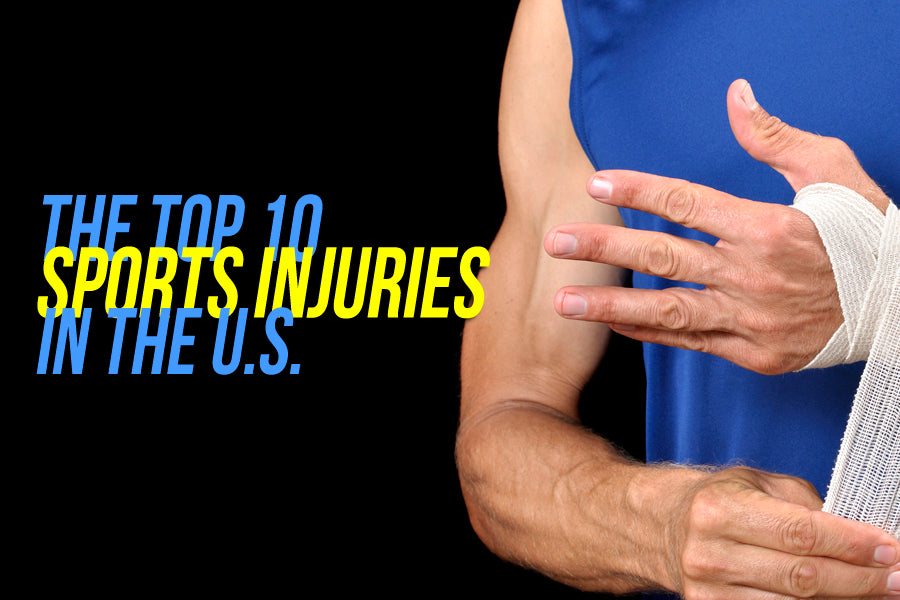The Top 10 Sports Injuries in The U.S.

Within the United States, athletics is one of the most popular pastimes. While staying fit with an active hobby or getting involved in regular sport is a great way to reduce your risk factors for many diseases, and enhance your quality of life - exercise comes with its own selection of risks.
Whether you're exercising for the sake of your health, or playing a sport, there's always a chance that one wrong move could result in an injury. Following, we'll cover some of the top 10 sports injuries experienced across the U.S. today.
1. Hip Flexor Strain
The hip flexor is a group of muscles responsible for assisting the upward movement of your knee or leg. Injuries occur when these muscles are stretched too far - which can happen as a result of weak muscles, hard impact, or forgetting to warm up. Most of the time, athletes with hip flexor problems are those that play sports with sudden changes in direction or upward movements, like basketball.
2. ACL Tear
If you've ever seen a fellow athlete wearing a compression knee sleeve, it may be because he wants to avoid an ACL tear. The ACL (anterior cruciate ligament) connects the knee to the leg bone, and the act of suddenly stopping or changing direction can cause a strain or tear to this ligament. A completely torn ACL could result in surgery.
3. Concussion
Concussions happen when you hit your head on something hard. Though they don't always result in a loss of consciousness, they do usually include symptoms like nausea, trouble concentrating, disorientation, headaches, and loss of balance.
4. Groin Pull
The inner thigh muscle is known as the groin, and these muscles are situated like a fan - used to pull the legs together. Sports like soccer, football and hockey that involve moving in a sideways motion have high chances of groin pulls.
5. Shin Splint
Known for sending shooting pains down the front of the leg, shin splints appear in most top 10 sports injuries lists, and happen most commonly to runners, or people who aren't used to regular exercise. Sometimes shin splints can be a result of a stress-fracture to the bone - an issue which should be assessed by a doctor immediately. Wearing proper shoes, compression sleeves, and knowing your limits can prevent shin splints.
6. Sciatica
Sciatica - otherwise known as lower back pain that extends into the legs - affects cyclists, runners, golfers, and baseball players. Sciatica is regularly caused by improper stretching, but it can also occur in runners who have one leg that is slightly shorter than the other.
7. Hamstring Strain
There are three muscles located behind the knee that connect to make up the hamstring. These muscles are pulled when an athlete overstretches or overuses that muscle, leading to bruising, pain, and soreness. Activities like hurdling can cause hamstring strains.
8. Tennis/Golf Elbow
About 7% of all sports injuries are related to the elbow. Also known as epicondylitis, tennis elbow occurs as a result of repetitive elbow use that creates tiny tears in the elbow ligaments. The condition happens most commonly in 30-60-year-olds.
9. Shoulder Injuries
Shoulder injuries, such as sprains, strains, and dislocations are regularly caused by overuse in sports that require overhead motion such as tennis, swimming, basketball, weightlifting, and volleyball. You can prevent shoulder injuries by strengthening these muscles during the off season.
10. Patellofemoral Syndrome
Knee injuries are at the head of any list of top 10 sports injuries. Around 55% of all sports injuries are knee injuries. Patellofemoral syndrome is caused by the repeated movement of the kneecap against the knee bone through activities like football, running, and cycling. This movement damages the kneecap tissues, which leads to pain.


Leave a comment